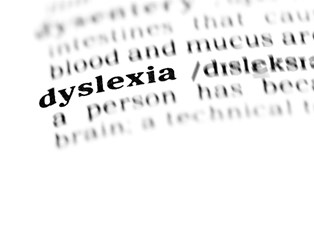Dyslexia is a developmental disability that inhibits an individual's ability to read properly. The individual's brain has difficulty recognizing and processing symbols. It's estimated that dyslexia affects about 15% of the American population to varying degrees. The following information discusses some of the symptoms of dyslexia, what causes dyslexia, and various treatment options.
Symptoms
Symptoms are sometimes difficult to pinpoint since they may change over time. Some childhood behaviors and signs to look for include the tendency to learn best through "hands-on" instruction, confusion over the letters "b" and "d," and difficulty with rhyming words. If your child is articulate and intelligent but doesn't do well reading, writing, or spelling, he or she may have dyslexia. He or she may also do well on oral tests, but not written exams. Children who suffer from dyslexia may excel at music, art, drama, design, and storytelling. They may also be late talkers or have difficulty pronouncing words.
Causes
Experts are not completely sure what causes dyslexia, but there are several theories. Since this disorder sometimes runs in families, it has been linked to genetics. According to the Mayo Clinic, dyslexia does appear to be inherited. Since there isn't a single test that will confirm a diagnosis of dyslexia, a doctor will consider several tests and factors. This likely will include a combination of reading tests, psychological testing, vision and hearing testing, and questions regarding family history and the child's development. A small percentage of people acquire dyslexia after they are born. This may be due to stroke, brain injuries, or another type of trauma.
Treatment Options
While there isn't a cure for dyslexia, early intervention is the key to limiting the detrimental effects from this disability. Some children, unfortunately, fall several years behind in reading and writing before getting the help they need. Treatment often involves a child meeting with an education specialist a few hours each week during school hours. Sometimes small-group instruction is used as well. These meetings and interactions may involve teaching children specific reading skills to help them better understand language. Children may be taught to trace letters with their fingers, recognize phonemes, build a stronger vocabulary, and practice reading out loud.
Dyslexia's obstacles can be overcome with proper intervention techniques. Several famous people who have enjoyed great success have struggled with dyslexia. A few of these include Steven Spielberg, Albert Einstein, and Leonardo da Vinci.



